- Administrator
- Albums and Singles
 Infinite Floor may be his first solo record proper, but Austin's Dylan Cameron has honed his craft as a producer and engineer in that scene for a number of years now. That technical expertise shines through on the eight songs that comprise this record, a suite of songs that ooze with rhythm, yet also a depth and complexity that rivals the most nuanced of electronic artists. Strong rhythms, infectious melodies, and amazing production all come together as an excellent record.
Infinite Floor may be his first solo record proper, but Austin's Dylan Cameron has honed his craft as a producer and engineer in that scene for a number of years now. That technical expertise shines through on the eight songs that comprise this record, a suite of songs that ooze with rhythm, yet also a depth and complexity that rivals the most nuanced of electronic artists. Strong rhythms, infectious melodies, and amazing production all come together as an excellent record.
Some of Cameron's background does not necessarily shine though directly in the sound of Infinite Floor, having spent time both as a hip-hop producer and metal drummer, but that sense of diversity and variety does come across in the diversity of production and composition here.Album opener "Nebula" is a great example of this:sweeping noises and crackling textures scream old school musique concrete electronic experiments, yet skittering high-hat and jungle drum loops push the piece more to the club than the opening minutes would have hinted at.
Cameron works with similar abstraction on "Forest Drone", where he pairs sheets of white noise with slightly mournful beats and synths.There is a distinct rhythm, but parts of it are clearly the product of synth bits or found sounds rather than trite samples or drum machines."Human Condition" is also similar in its method, with ambient sweeps and open passages eventually blended with massive handclaps and bass heavy beats.Concluding the piece on a field recording of some sort, Cameron goes in many different places during the piece’s sub-four minute duration but never does it feel unfocused.
Other moments may be a bit less challenging of course, but even during the more conventional songs, Cameron is sure to give them a distinct edge in his performance."Misted Road" more heavily features conventional sounding house synth stabs and lead, but the overall structure and composition is loose and far less repetitive than most music of this style."Difficult Floor" leans a bit more into the world of dance floors with its standard techno throb and sampled female vocals, but is still drenched in Cameron's idiosyncrasy.
As I mentioned before, one of the biggest assets to Infinite Floor is Cameron's experience and ability as a producer and engineer.Not to take anything at all away from his ability to construct beats and melodies (which is exceptional), but where this album stands out most is in its production and sound design.There is a depth and complexity that is extremely impressive throughout this album.Synths and samples are obvious at times, but Cameron blends and shapes them into different elements entirely.The finished product is both memorable and compelling in its nuanced and unique style.
samples:
 
Read More
- Lucas Schleicher
- Albums and Singles
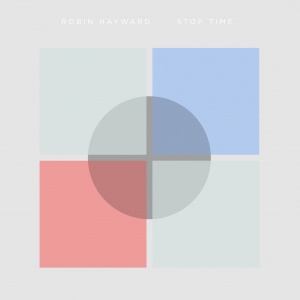 The cover for Stop Time is meant to convey the nature of the tool used to compose it, an invention of Robin Hayward’s called the Hayward Tuning Vine. The idea behind it is to spatialize (and colorize) the relationship between just intervals played, in this case, on a baritone saxophone, a cello, and a microtonal tuba. At the performance from which this album is drawn, each instrumentalist was illuminated in a color corresponding to the pitch he played on the Vine. If the pitch shifted, so did the color. Those pitches were in turn fed to a surround-sound system and projected into different parts of the performance space. In the move to recorded medium, the spatial-visual element is partially flattened, making the slow accrual of rhythm, texture, and harmony the music’s driving feature.
The cover for Stop Time is meant to convey the nature of the tool used to compose it, an invention of Robin Hayward’s called the Hayward Tuning Vine. The idea behind it is to spatialize (and colorize) the relationship between just intervals played, in this case, on a baritone saxophone, a cello, and a microtonal tuba. At the performance from which this album is drawn, each instrumentalist was illuminated in a color corresponding to the pitch he played on the Vine. If the pitch shifted, so did the color. Those pitches were in turn fed to a surround-sound system and projected into different parts of the performance space. In the move to recorded medium, the spatial-visual element is partially flattened, making the slow accrual of rhythm, texture, and harmony the music’s driving feature.
Robin Hayward is a member of Catherine Christer Hennix’s Chora(s)san Time-Court Mirage ensemble, and he’s collaborated with composers like Alvin Lucier, Eliane Radigue, and Christian Wolff. For anyone familiar with Hennix or Radigue, their work makes for a convenient point of reference. Hayward uses few materials—just three instruments, a handful of tones, and a series of sustained pulses. The variety and beauty they create is derived from how they interact within their circular framework.
Throughout the album’s half-hour duration, cello, sax, and tuba revolve around an invisible center, conveying distance and intensity. They stand out in the stereo for a time, solo on a single note (repeated or held), then fall back into an underlying drone. The mix makes good use of stereo to position the instruments too. They seem to trade places, rocking left-to-right and back-and-forth on a smooth, glassy curve; a parallel, maybe, to the ratios of whole numbers used for representing just intonation. By the end, the overall effect escapes into an extra dimension. It’s like listening to someone breathe, or like watching small waves lap against one another in slow motion. The CD may not be able to replicate the visual effects of the live performance, but Hayward’s music relates visual information of its own, both color and light, and the cloudy images from the no-space of dreams.
samples:
 
Read More
- Lucas Schleicher
- Albums and Singles
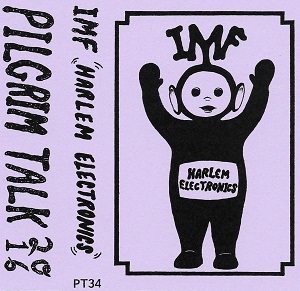 High-volume, high-velocity, whiplash-inducing noise torn screaming from the guts of a haywire machine. As the Pilgrim Talk website notes, Ian M. Fraser programs his computer to make noise. Once finished, circuitry and code do the rest, no human interaction required. The result is so quick-moving and chaotic that absorbing it in the first four or five listens is about as likely as a windshield absorbing a brick in a hurricane.
High-volume, high-velocity, whiplash-inducing noise torn screaming from the guts of a haywire machine. As the Pilgrim Talk website notes, Ian M. Fraser programs his computer to make noise. Once finished, circuitry and code do the rest, no human interaction required. The result is so quick-moving and chaotic that absorbing it in the first four or five listens is about as likely as a windshield absorbing a brick in a hurricane.
 
 
Fraser’s work produces sounds that are thick, gnarled, and biting, as sharp as they are chunky. There’s processed white noise, sizzling distortion, squealing tones, and the kind of chewed up electronic clamor that only a computer could make, like the sound of a million insects eating a screaming animal inside a gasoline-powered wood chipper. And it’s sustained for 15-minutes: one passage after another (it has to be around a hundred in total) separated by sudden shifts in texture and rhythm, all of it rushing by as if set in motion by three megatons of dynamite. The variety (and channel-jumping structure) is impressive; the after effect, relieving. On a Tuesday afternoon when Hillary Clinton courted Henry Kissinger’s approval and Neil deGrasse Tyson defended his dystopian nightmare state of the future, this hornet’s nest of igneous jetsam made everything a hundred times better. Turn Harlem Electronics way up and dig deep into the grain of an electronic furnace.
samples:
 
Read More
- Administrator
- Albums and Singles

Phase One of our modest campaign to fund The Dots' Tour of North America slated for Autumn 2016. Festive collects together all the "seasonal" releases by the Dots so far and presents them as a delightful 2xCDr package.It is necessarily limited but we intend to keep this full set downloadable for the foreseeable future. 18 of the physical sets will be available for the Tour; 49 will be available via this site from around 28 OCTOBER 2016.
Read More
- Administrator
- Albums and Singles
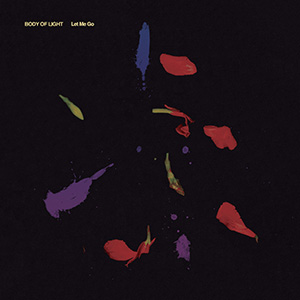 While it may be easy at first glance to label Body of Light (the duo of brothers Alex and Andrew Jarson) as yet another entry in the EBM revival arena, that is not entirely fitting. There are drum machines and vintage synths aplenty, certainly, but Let Me Go stands on its own as a brilliant record of pure unadulterated synth pop that makes no conscious attempt at being anyone else, or sounding of any time except the present.
While it may be easy at first glance to label Body of Light (the duo of brothers Alex and Andrew Jarson) as yet another entry in the EBM revival arena, that is not entirely fitting. There are drum machines and vintage synths aplenty, certainly, but Let Me Go stands on its own as a brilliant record of pure unadulterated synth pop that makes no conscious attempt at being anyone else, or sounding of any time except the present.
Even though they are geographically distant (the brothers Jarson hail from Phoenix, Arizona, which is pretty far from the Los Angeles scene), Body of Light has some kindred spirits with label mates High-Functioning Flesh and Youth Code, but they are anything but a sound alike band.While those two projects are marvelous in their own right, they also focus more old school punk and hardcore elements filtered through their electronic gear.Here, however, the sound is more unabashedly hook-laden and romantic, albeit darkly.The sound is much in line more Pet Shop Boys or Depeche Mode than Skinny Puppy.
They also differ from the decidedly European gothic futurepop sound, even though that is also a similar reference point for their style.There are similarly big, rave heavy synth leads from Andrew and Alex's dramatic vocals, but unlike those bands, Body of Light have a slightly less polished, more natural and human sound to them.I have always found that cold sterility in this type of music off-putting, and there is none of that to be heard here.It still results in Let Me Go being packed with catchy hooks and big, memorable choruses, and people could still easily do that weird stomping industrial dance people in that scene love so much though.
The record starts off on a big note with "How Do I Know?", at first all big synth leads that erupt into bombastic, explosive drums peppered with the weird cowbell and rimshot sounds on drum machines that never get enough use.The result is upbeat and fun, but still with a dark edge and hint of menace to it.The same applies to "Tremble":it is shamelessly grandiose pop, from its dramatic synth opening to the taut rhythms and Alex Jarson's dramatic, hook laden chorus.The energy is undeniable and the song is extremely memorable.
The duo paced the album well though, so it is not all big uptempo numbers.Both "Felt" and "Cold Gestures" have sparser arrangements and overall more somber tones, making those highs all the more intense.Each side of the record ends with a song that hearkens a bit more back toward their earlier, more experimental days."Last Breath" is a frigid mass of spaced out synth pulses, anchored by snappy beats and a building intensity.Album closer "World Falls Apart" is a nervous, but dour mass of stuttering percussive clicks and drips, as dramatic, icy keyboards cast an ominous shadow.Mixed with Alex's impassioned, yet frustrated vocals, it is a heavy note to end the record on.
My first exposure to Body of Light was seeing them live a few months ago, and I was especially impressed with their 2013 EP Volantà Di Amore, so my hopes were high when this album was announced.In this case, my expectations were exceeded, as Let Me Go is an unabashedly magnificent piece of rich and dramatic, yet entirely catchy and memorable music.It is a record that I can easily see as being among my favorite releases of 2016.
samples:
 
Read More
- Administrator
- Albums and Singles
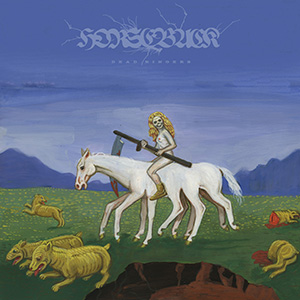 While it has only been seven years since my first exposure to Jenks Miller's Horseback (2009's The Invisible Mountain), the amount of change and evolution the project has undergone is astounding. What began as classically minimalist Sabbath worship veered toward psychedelic southern rock and has now come back as an idiosyncratic electronic record full of untreated vocals and captivating melodies. Even with this wide variation in sound, Dead Ringers manages to stay consistent with Miller's previous body of work while still sounding like a different, but no less amazing beast.
While it has only been seven years since my first exposure to Jenks Miller's Horseback (2009's The Invisible Mountain), the amount of change and evolution the project has undergone is astounding. What began as classically minimalist Sabbath worship veered toward psychedelic southern rock and has now come back as an idiosyncratic electronic record full of untreated vocals and captivating melodies. Even with this wide variation in sound, Dead Ringers manages to stay consistent with Miller's previous body of work while still sounding like a different, but no less amazing beast.
The transition was not as abrupt as it may seem on the surface, however.The Stolen Fire tape (later reissued in the A Plague of Knowing collection) featured some of Miller's first overt excursions into the world of drum machines, synths, and samplers, but compared to the lush arrangements and orchestrations of Dead Ringers, those earlier pieces feel far more like demos or experiments compared to these fully fleshed out songs.
For instance, the snappy drum machine and fuzzy guitar that lead offalbum opener "Modern Pull" is an odd pairing of up tempo rhythms and dissonance, but the two disparate elements meld together perfectly.Most shocking is, besides the synthesizer focus, is Miller's clean, undistorted vocals, which rarely appeared in such a naked manner.It may not sound like it at first, but there is a vintage electronic pop aspect to the sound, but one that is undeniably Horseback once the classic rock inspired guitar soloing kicks in.
On "A Bolt from Blue", the electronic sounds take on a more deconstructed avant garde sound as an almost 90s R&B rhythm section underpins bizarre chimes and twang-heavy guitar.There is a distinct lightness to the sound, but one that is almost uncomfortably strange once the vocals kick in.The same goes for "Lion Killer", with its rich synthesizer arrangement and bass guitar lead, with bent electronics and marimba giving a bizarrely psychedelic edge to what could almost pass as a pop song.
The Horseback of old still appears here and there on this record, however."In Another Time, In and Out of Form" feels like a throwback to the Invisible Mountain days with its circular, chugging riffs and what sounds like live drumming, the only distinction being Miller's singing as opposed to the demonic growl that featured more heavily in his earlier work."The Cord Itself" channels the greater abstraction that defined Forbidden Planet with its dubby echo chamber rhythms and dark guitar drone, building to an intense wall but never going full metal.
Dead Ringers is, like much of the Horseback catalog, difficult to fully explain, which is exactly what makes it so fascinating.Genre tags are somewhat useless, because the wide array of instrumentation and production styles are pulled together on here that contradict one another, yet in the hands of Jenks Miller make perfect sense alongside each other.It really just boils down to the fact that this is a Horseback album, and no one makes them quite like he does.Each one thus far has had a distinct sound, and this is no different.But perhaps the most striking element is how his songwriting and arrangement has grown.Not to demean any of his previous work, but Dead Ringers is extremely impressive in its composition and production, giving it an added depth that amazes with each listening.
samples:
 
Read More
- Administrator
- Albums and Singles
 Little Annie’s latest solo album is a bit of a freewheeling evolution upon her recent cabaret/torch song work with pianist Paul Wallfisch, though Wallfisch was notably still involved in the lead single "Dear John."  For the rest of the album, however, Annie alternately collaborated with Toronto multi-instrumentalist Ryan Driver and Brooklyn electronic trio Opal Onyx.  Naturally, the more rhythmic and spoken-word-themed electronic pieces are the more dramatic departures, recalling some of her ‘80s work as Annie Anxiety.  While the Driver pieces show a considerably more subtle change, that seems to be the more significant and (presumably) more lasting one, taking Annie’s "chanteuse" persona in a more lush, lively, and conventionally beautiful direction.  Also of note: the title piece is easily one of the finest pieces of Annie's career.
Little Annie’s latest solo album is a bit of a freewheeling evolution upon her recent cabaret/torch song work with pianist Paul Wallfisch, though Wallfisch was notably still involved in the lead single "Dear John."  For the rest of the album, however, Annie alternately collaborated with Toronto multi-instrumentalist Ryan Driver and Brooklyn electronic trio Opal Onyx.  Naturally, the more rhythmic and spoken-word-themed electronic pieces are the more dramatic departures, recalling some of her ‘80s work as Annie Anxiety.  While the Driver pieces show a considerably more subtle change, that seems to be the more significant and (presumably) more lasting one, taking Annie’s "chanteuse" persona in a more lush, lively, and conventionally beautiful direction.  Also of note: the title piece is easily one of the finest pieces of Annie's career.
As an outside observer, the central problem with Little Annie's oeuvre to date has been one that most other artists would probably love to have: she has a magnetic presence and flair for style that seems quite difficult to fully capture on a recording.  Also, while her current role as smoky voiced chanteuse is ideal for showcasing her power as a performer, reverent renditions of subdued and smoldering jazz standards are not particularly conducive terrain for conveying the full "Little Annie" experience.  It is a classic "square peg, round hole" scenario.  With Trace, however, Annie has found a much better balance between cabaret stylist and her more idiosyncratic gifts.  Those two sides rarely coexist easily within the same song, but at least both sides are somewhat equally represented here–the Opal Onyx bits are especially effective at highlighting Annie’s eccentric edges.  Even if pieces like the brief acapella opener "Cold World" or the throbbing, sassy, and delightfully absurd "Bitching Song" are not particularly substantial, they provide a welcome injection of personality and serve as a very effective contrast to the album’s more straightforward and jazz-based fare.  One of the Driver pieces ("Midlife Lazarus") is even more radical, beautifully weaving Annie's spoken-word with doomy guitar sludge and a very unexpected choir.  It sounds like absolutely nothing else on the album, but works well as a self-contained entity.  Annie should strongly consider sending Sunn O))) her resumé.
Impressively, the pieces written by Annie and Driver fit quite seamlessly with the album’s two standards ("India Song" and "You Don’t Know What Love Is").  I am not sure it is ever a good idea to go toe-to-toe with Billie Holiday or Nina Simone without at least radically overhauling an arrangement, but Annie definitely gets points for at least picking good songs to cover and she very much holds her own. More importantly, Annie's own "You Better Run" sounds like something that Holiday or Simone themselves might have incorporated into their repertoires if the timing were different.  I am also quite fond of the sensuous Latin jazz of "Break It You Buy It," as it takes Annie’s characteristic sultry melancholia in a sexier and livelier direction than usual.  The album’s highlights, however, are the very different "She Has a Way" and the closing title piece.  "She has a Way" is one of the Opal Onyx pieces and its industrial-tinged narrative sounds like the belated perfection of Annie’s previous Jackamo-era aesthetic.  A lot of Annie’s most compelling work occurs when she delves into her misfortune-strewn urban character studies, though they generally require a lightness of touch to avoid erring on the side of too maudlin.  "She Has A Way" does not have a light touch at all, but it perversely works anyway.  On the other hand, "Trace" is just a tender and gorgeously lush love song with perfectly understated accompaniment, an irresistible hook, and a truly impressive vocal performance from Annie.  It is unquestionably one of the most moving and beautiful pieces of Annie's long career, but it is equally noteworthy that just about every original song on Trace seems better than either of the two standards.  While Annie excels as an interpreter/stylist, she is still generally at her best when she is channeling her own words.
If Trace can be said to have a flaw, it is only that it is a bit kaleidoscopic: it is readily apparent that Annie had multiple collaborators and shifted directions several times while the album was gradually taking shape.  In an uncharitable light, that could be seen as a lack of clear vision.  I think that that variety (whether intended or not) actually serves Annie quite well though, as a full album of torch songs or piano ballads can get quite numbing regardless of the artist’s abilities due to the inherently limited palette and unrelentingly noirish mood.  While Ryan Driver's guidance and arrangement talents definitely deserve a lot of credit for Trace's success (he apparently talked Annie into singing more and growling less), the biggest strength is the songs themselves.  Annie has always had a wonderfully soulful and throaty voice and charisma to burn, so it is always just a question of finding or writing strong enough material to bring that out.  Also, Trace excels in some less tangible ways as well, as it feels like a more fun and vibrant affair than some of her previous "jazz chanteuse" albums.  I have no idea if that is a result of the production, the performances, the arrangements or all three, but I definitely like it.  Whatever convoluted formula Annie has here, I sincerely hope she continues using it.  I suspect Soul Possession will probably forever reign as my favorite of Annie’s albums, but Trace is probably the high point of her creative rebirth as a cabaret diva.
 
Read More
- Administrator
- Albums and Singles
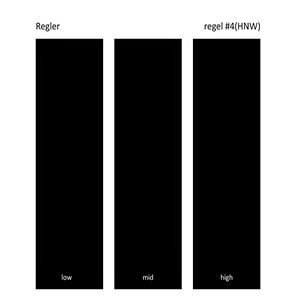 Following up the concept of their most recent works, the duo of noise artist Mattin and Brainbombs member Anders Bryngelsson have again chosen to subvert two niche genres of music and attempt to recreate them in their own, deconstructed noise rock style. In this case, one album of Harsh Noise Walls, and the other three lengthy treatments of various subgenres of heavy metal. Unsurprisingly, the duo's reconstruction of this music ends up being less about imitation and more of a study and critique of what is expected by those specific styles.
Following up the concept of their most recent works, the duo of noise artist Mattin and Brainbombs member Anders Bryngelsson have again chosen to subvert two niche genres of music and attempt to recreate them in their own, deconstructed noise rock style. In this case, one album of Harsh Noise Walls, and the other three lengthy treatments of various subgenres of heavy metal. Unsurprisingly, the duo's reconstruction of this music ends up being less about imitation and more of a study and critique of what is expected by those specific styles.
Rapid Moment/At War with False Noise/Decimation Sociale/Pilgrim Talk
Harsh Noise Wall, or HNW, is a relatively specific offshoot of what is generally labeled noise.Its main practitioners are known for their monochromatic audacity (Vomir, who's Romain Perrot runs the Decimation Sociale label) or approach that borders on personal obsession (The Rita).As a consequence of this, often less emphasis is placed on the actual sound, to the point of it being an almost tongue-in-cheek self-awareness that many styles lack.Mattin and Bryngelsson chose to attack the genre via a guitar and drum duo arrangement, each using their respective instruments to mimic the immobile white noise monolithic sound.
Unsurprisingly, the actual output ends up being dissimilar to actual HNW via the rapid-fire erratic beats and shrill, metallic tinged guitar assaults.Try as they might, they cannot fully replicate that dull roar for the album’s nearly 30 minute duration.Instead though, it sounds more like the detritus of a grindcore demo tape, or the most dissonant moments of a multigeneration heavy metal show bootleg.It also rejects the notion that all HNW style noise sounds the same, or that it is entirely simplistic and unchanging (the best stuff has never been).
samples:
 
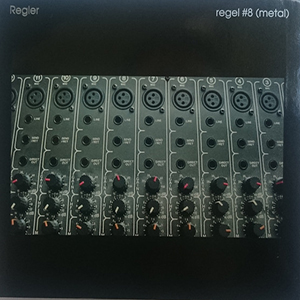 On Metal, however, the duo took a more audience participation approach on the three pieces contained.Each were recorded live at a different venue, with audience members playing Mattin and Bryngelsson a metal song they had never heard off of the audience member’s phone or mp3 player.From this, the duo tried to recreate, or at least improvise based upon what they heard."Heavy Metal" begins with some bleed through of the audience member’s chosen song as Regler slowly get themselves going.At first it sounds like nothing in particular, but after around three minutes the performance fully locks in, with a truly heavy metal sound to it (albeit one that is improvised and messy, as opposed to tight, riff heavy arrangements), ending on an almost progressive rock note.
On Metal, however, the duo took a more audience participation approach on the three pieces contained.Each were recorded live at a different venue, with audience members playing Mattin and Bryngelsson a metal song they had never heard off of the audience member’s phone or mp3 player.From this, the duo tried to recreate, or at least improvise based upon what they heard."Heavy Metal" begins with some bleed through of the audience member’s chosen song as Regler slowly get themselves going.At first it sounds like nothing in particular, but after around three minutes the performance fully locks in, with a truly heavy metal sound to it (albeit one that is improvised and messy, as opposed to tight, riff heavy arrangements), ending on an almost progressive rock note.
For "Thrash Metal", the duo chose to replicate the taut guitar riffs and drum passages in a more abstract manner, via a jerky stop/start erratic structure to the earlier parts of the piece.Those dramatic breakdowns become tense pairings of noise and silence, never locking into a comfortable pattern.The final work, "Black Metal" is perhaps the closest reading of the genre the two performers do.It is fully appropriate that, when mimicking a genre that is so focused on low production values, the result is shrill feedback and a dull roar of noise.The piece has the two mostly creating a dull roar (not unlike the HNW album), but allowing some more conventional metal moments through, even at times allowing the piece to approach some sort of approximated punk/thrash sound.
Like HNW, Metal features Regler playing with the accepted tropes of a genre, but subverting them into an entirely different sound, while simultaneously addressing the criticism that metal (like noise) is a simplistic genre "anyone" can do.By attempting to improvise what they heard, the creation is something entirely different and one that finally bears little resemblance to what they were attempting to imitate.Both albums are excellent, if at times intentionally difficult listening, but Metal stands out a little more as being a more diverse suite of music, but also one that is conceptually strong and still not afraid to bring in a bit of levity in an otherwise dour genre.
samples:
 
Read More
- Administrator
- Albums and Singles
 Blizzard is a luxurious reissue of a CDr Aaron Dilloway originally put out on his Hanson imprint back in 2009, presented here in high quality double vinyl. Dilloway and Robert Turman recorded these four pieces together during an actual blizzard, which not only further enhances mood, but also seems to creep in throughout these lengthy compositions. Largely based upon analog synthesizer and tape manipulation, the duo not only captures the frigid, isolated mood of being caught in a massive snowstorm, but the sounds of one as well.
Blizzard is a luxurious reissue of a CDr Aaron Dilloway originally put out on his Hanson imprint back in 2009, presented here in high quality double vinyl. Dilloway and Robert Turman recorded these four pieces together during an actual blizzard, which not only further enhances mood, but also seems to creep in throughout these lengthy compositions. Largely based upon analog synthesizer and tape manipulation, the duo not only captures the frigid, isolated mood of being caught in a massive snowstorm, but the sounds of one as well.
The story goes that Dilloway was set to move from Ohio back to Michigan (where his wife and child had already begun settling in) when a massive storm hit.Rather than stay in his then empty house alone, he paid a visit to Turman, and the two decided to record this album.Four pieces, each spread across a side of vinyl, capturing these studio collaborations with a fully fleshed out, composed sense to them.They channel this cold and desolate mood perfectly, and without as much harshness as I would have expected.
The first piece sets the stage very well:a sustained semi-melodic passage of synthesizer has a distinctly musical tone to it, but all the while casts a creepy shadow.What almost resembles haunted voices and ancient woodwind sounds drift through the piece.The icy and lonely mood is amplified all the more by the sound of violent, blowing storm winds that may either be a field recording or an extremely accurate in studio simulation.
The second part continues with the buzzing synth theme, here a bit more dissonance than before.Beneath this the two cast layers of deep, churning distortion that adds a tasteful bit of menace without pushing it too far into dark ambient sounding realms.Textural passages become the focus, having a wet, crunchy sense to them like piling snow.The composition finally transitions into more heavy distortion, like whiteout snow conditions until dropping away into a blackened expanse, like a moment of peace on a clear, frozen night.
The second record begins on a more rhythmic note, with loops of static and noise leading to some sense of rhythm, mimicking a snow plow crunching off in the distance.The piece is dense with looped layers, high register hisses bursting over pulsating bass passages, resulting in a very dynamic and rhythmic piece.The concluding composition sees the duo going back to the buzzing synths that defined the first record, tinged with unadulterated static.There is a bit that could be a voice, or could be a horn, and that ambiguity just adds to the strength overall, closing the album on a cold, empty note befitting its title.
Very rarely does a record’s title so accurately describes the contents, and the duo do an undeniably excellent job at capturing the environment that cold day in January of 2009 in solely audio form.It could not have hurt that the conditions under which Blizzard was recorded had a significant impact on the mood of this album, but I imagine that Turman and Dilloway could have created just as compelling of a work on a warm summer’s day.Fabrica should also be commended for getting this album back out there, and in such a luxurious way.
samples:
 
Read More
- Administrator
- Albums and Singles
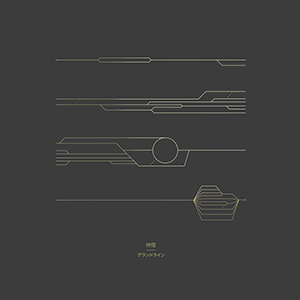 The quartet of Nakama (Adrian L√∏seth Waade on violin, Ayumi Tanaka on piano, Andreas Wildhagen playing drums, and Christian Meaas Svendsen providing double bass) expand upon their use of silence in juxtaposition with experimental jazz from their previous record, Before the Storm, into this newer, more conceptually structured work. The album is based upon Svendsen's structuring, which instructs the performers to improvise their playing reacting to a visual structure, giving the work an additional layer of complexity that makes the album all the more compelling.
The quartet of Nakama (Adrian L√∏seth Waade on violin, Ayumi Tanaka on piano, Andreas Wildhagen playing drums, and Christian Meaas Svendsen providing double bass) expand upon their use of silence in juxtaposition with experimental jazz from their previous record, Before the Storm, into this newer, more conceptually structured work. The album is based upon Svendsen's structuring, which instructs the performers to improvise their playing reacting to a visual structure, giving the work an additional layer of complexity that makes the album all the more compelling.
These seven pieces are all improvisations based on each performer’s "compositions" (what they actually play) as part of a larger "form" structure that determines when parts are played, or when they transition into a new composition.These sort of game-like rules are not necessarily new to jazz improvisations, but Nakama clearly put their own spin on things.I admit at times the conceptualism went over my head (and the included diagrams in the printed insert triggered some old geometry anxiety), but completely divorced from the concept, the music stands on its own.
Almost half of the album is taken up by the lengthy "Doremingo + Taiko" (using the "Grand Line" form included in the insert).Waade's restrained violin, Tanaka's building drama on piano, and Wildhagen’s buzzing cymbals build from its quiet opening rather quickly into a heavy roar.At times the piano takes the focus, making for a conventional beacon in an otherwise dissonant mix, while at other times, the drums and Svendsen’s double bass lock into steady, metronomic rhythms that soon fall apart.
Throughout its 28-minute duration, each player manages to take the focus via conventional sounding compositions, but also just as quickly slip away into abstract squeaks and scrapes, rattling drums or rumbling bass.It is an extremely dynamic work that playfully goes from structure into chaos, taking on an almost collage-like sound as the players jump from composition to composition, at times pausing to allow for a break, with the silence excellently underscoring the dissonance.
The next five pieces are substantially shorter in length and, not surprisingly do not demonstrate quite the drastic variances in structure that "Doremingo + Taiko" did.For "The Sun", violin and piano lead off right away to set a more melodic mood, as open space and understated performing keeps things a bit more peaceful.Conversely, "Nanika" is a mass of taut string plucks and shrill scrapes.Again, the four players keep a healthy use of silence there, but the overall sound is definitely on the experimental side.
The other lengthy piece, the closing "Daily Choices" (which uses the "Metro" form, my guess is some form of mass transit map), uses a somewhat different, though just as effective strategy for its 14 minutes.Rather than the chaotic mass of "Doremingo + Taiko", here there is an emphasis on repetition:recurring strings, simple but steady percussion, with the occasional unexpected bass string pluck or scraped string.The repetition seems to be signified in the "Daily Choices" title, but these bits of "glitch" in the routine at times leave the piece sounding like a malfunctioning computer, occasionally spitting out bits of music erratically, to make for a more fresh, and overall looser and more fun sounding composition.
Christian Meaas Svendsen's approach to structure and performance on Grand Line may be a rather complex and conceptual one, but by no means is being able to follow it integral to enjoying this record.There are times where the patterns being utilized are more obvious than others, but even without that in mind, Nakama have created a work that falls under the general heading of "free jazz" (though it is not as free as it may sound), but one that also embraces subtlety as much as chaos.
samples:
 
Read More
- Administrator
- Albums and Singles

The latest from Los Angeles synthesis figurehead M. Geddes Gengras consolidates his entire arsenal of techniques and compositional tricks into a four-sided opus of immersive sound worship. Recorded and assembled across six years and far-flung geographies (California, Connecticut, The Netherlands), Interior Architecture was imagined as an "impossible object," simultaneously stark and lush, sprawling and concise, analog and digital. Gengras' array of processing modules allow for a near-infinite complexity of texture and movement: tones rise and morph and recede, inscrutable chords float in space, elements integrate and then refuse resolution. Long-time associate Seth Kasselman guests on clarinet throughout Side C but otherwise Architecture is, as per usual, a solitary affair – the rogue alchemist alone at his mainframe, the laboratory thick with smoke. His is an ambiguous and experiential form of tactile psychedelia, electronic rorschach tests for the 21st century. Gengras' own assessment is suitably consuming: "At its best it should feel like sinking into really warm quicksand or dying of hypothermia."
More information can be found here.
Read More

